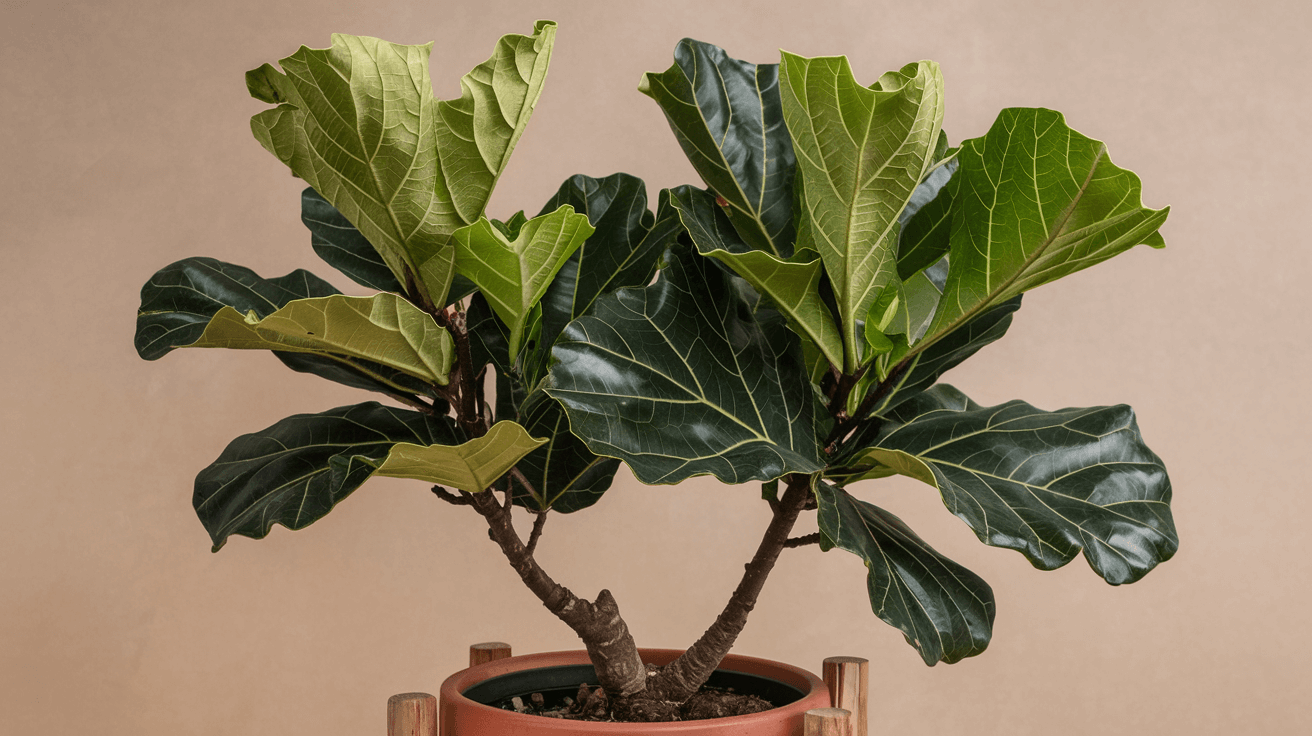There’s something uniquely satisfying about spotting that first tight, bright green bud emerging from your fiddle leaf fig’s growing point. After weeks of consistent care, that tiny protrusion signals success—your plant is actively growing and thriving under your watch.
But the journey from that initial bud to a fully unfurled, glossy leaf takes longer than most new fiddle owners expect, and understanding this timeline prevents unnecessary worry.
I’ve watched hundreds of fiddle leaves develop over the years and learned that the process follows predictable patterns, though timing varies based on environmental conditions and plant health.
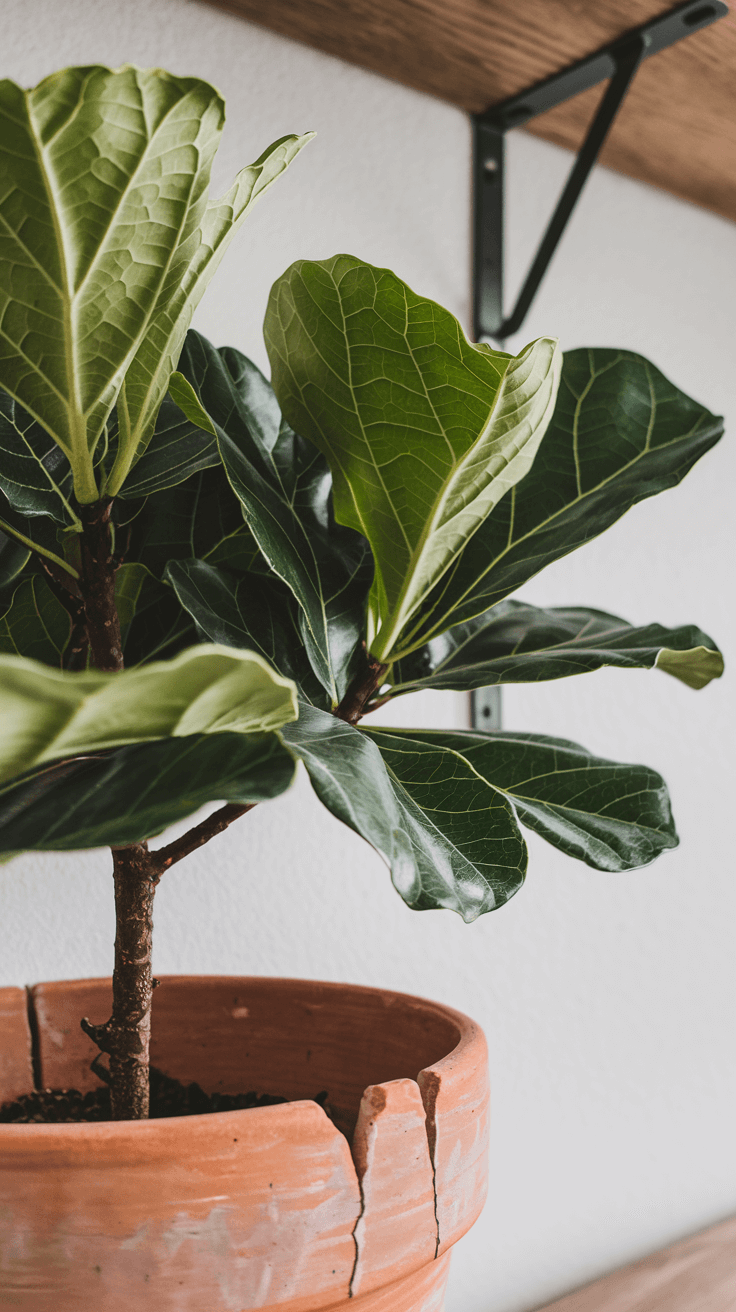
New leaves also look dramatically different from mature foliage during their emergence, which can confuse owners wondering if something is wrong when their new growth appears lighter, smaller, or oddly shaped.
This guide walks through exactly what normal new leaf development looks like from initial bud to full maturity, how long each stage typically takes, which environmental factors accelerate or slow growth, and specific techniques for encouraging your fiddle to produce new leaves more frequently and vigorously.
The Stages of New Leaf Development
New fiddle leaf fig growth begins as a small, pointed bud emerging from the terminal growing point at the tip of each branch. This initial bud is typically bright green, sometimes with a reddish or bronze tint, and measures just a quarter to half inch when first visible.
The bud remains tightly furled for 7-10 days as it develops the internal structure that will become the new leaf. During this period, growth seems minimal from the outside, but the leaf is actively forming within its protective casing.
The unfurling stage begins when the tip of the leaf starts pushing through the bud casing. Over 5-7 days, the leaf gradually opens, revealing its characteristic fiddle shape. New leaves unfurl from the center outward, appearing crinkled and delicate initially.
They’re noticeably lighter in color than mature leaves—often a lime green or yellow-green rather than the deep, glossy green of established foliage.
This lighter coloration is completely normal and indicates the leaf is still producing chlorophyll and developing its protective waxy coating.

Full expansion takes an additional 2-3 weeks after unfurling. During this phase, the leaf reaches its ultimate size, which varies based on plant maturity and health. Young fiddles produce 6-8 inch leaves, while mature specimens generate 10-15 inch leaves under optimal conditions.
The leaf also thickens during this period, developing that substantial, leathery texture characteristic of healthy fiddle foliage.
Color deepens gradually, transitioning from light green to the rich, dark green that matches older leaves.
The final maturation phase lasts 3-4 weeks, during which the leaf continues hardening and developing its glossy finish. The waxy cuticle thickens, creating that signature shine. Full hardening is complete when the leaf feels firm and substantial rather than soft and pliable.
From initial bud appearance to fully mature leaf, the complete process takes 6-8 weeks under typical indoor conditions.
Pro tip: Resist touching or manipulating new leaves during unfurling and expansion. The delicate tissue damages easily, and oils from your hands can interfere with proper development, leading to brown spots or distorted growth patterns.
Environmental Factors That Influence New Growth
Light intensity is the single most powerful driver of new leaf production. Fiddles need 6-8 hours of bright, indirect light daily to generate the energy required for active growth.
Insufficient light doesn’t necessarily prevent new leaves from forming, but it significantly slows the process—a leaf that would normally develop in 6 weeks might take 10-12 weeks in dim conditions.
The resulting leaves are often smaller, paler, and more prone to problems than those produced in optimal light.
Temperature stability within the 65-75°F range supports consistent growth, while fluctuations or extremes slow or halt new leaf production.
Fiddles exposed to temperatures below 60°F regularly may stop growing entirely, conserving energy for survival rather than expansion.
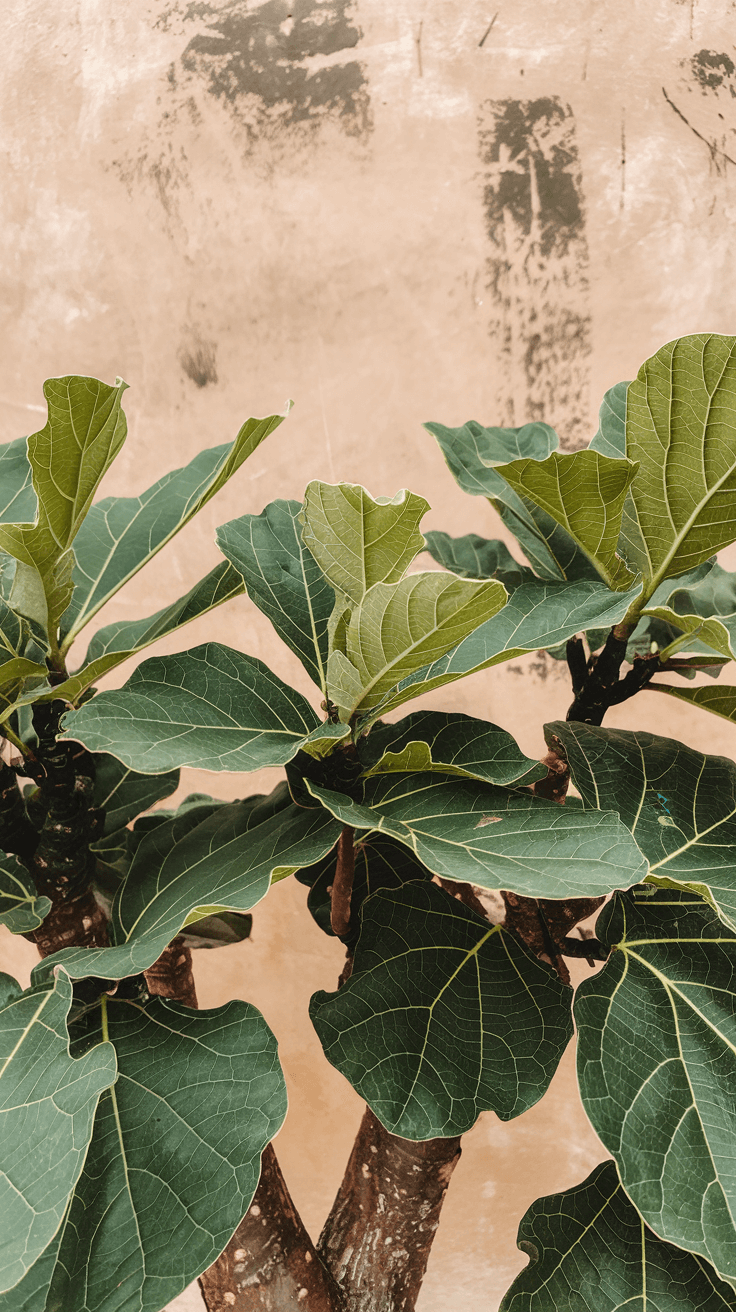
I’ve observed that fiddles in homes with stable temperatures produce new leaves at predictable intervals, while those experiencing frequent temperature swings show erratic, unpredictable growth patterns.
Humidity levels between 40-60% facilitate easier leaf unfurling and expansion. In very dry environments, new leaves may struggle to unfurl completely, sometimes sticking to themselves or developing crispy edges before fully opening.
Increasing ambient humidity during active growth periods—using humidifiers, pebble trays, or grouping plants together—supports smoother leaf development and reduces unfurling complications.
Seasonal timing dramatically affects growth rate and frequency. Spring and summer bring peak growth periods when fiddles may produce a new leaf every 4-6 weeks from each growing point. Fall growth slows noticeably, with leaves taking 8-10 weeks to develop.
Winter brings near-dormancy in most indoor environments, with little to no new growth regardless of care quality.
Understanding these natural rhythms prevents frustration when your fiddle stops producing leaves in December despite perfect care—it’s responding to reduced light and entering its rest period.
Expert insight: Track new leaf emergence dates in a simple calendar or journal. Over 6-12 months, you’ll identify your specific plant’s growth pattern, learning exactly when to expect new leaves based on season and your home’s unique conditions.
Encouraging More Frequent New Growth
Fertilization during growing season provides the raw materials fiddles need for leaf production. Use a balanced liquid fertilizer diluted to half strength every 2-3 weeks from March through September.
Nitrogen particularly supports foliage development, so formulations with slightly higher nitrogen (like 3-1-2 NPK ratios) work well for fiddles.
However, never fertilize during winter dormancy or when the plant shows no signs of active growth—unused nutrients accumulate as salts that damage roots.
Proper watering maintains the consistent moisture levels that support growth without causing root problems that halt development. Water when the top 2-4 inches of soil have dried, providing thorough saturation that reaches the entire root ball.
Both overwatering and underwatering stress the plant, redirecting energy toward survival rather than growth. Consistent watering patterns that allow soil to cycle between moist and partially dry optimize conditions for new leaf production.
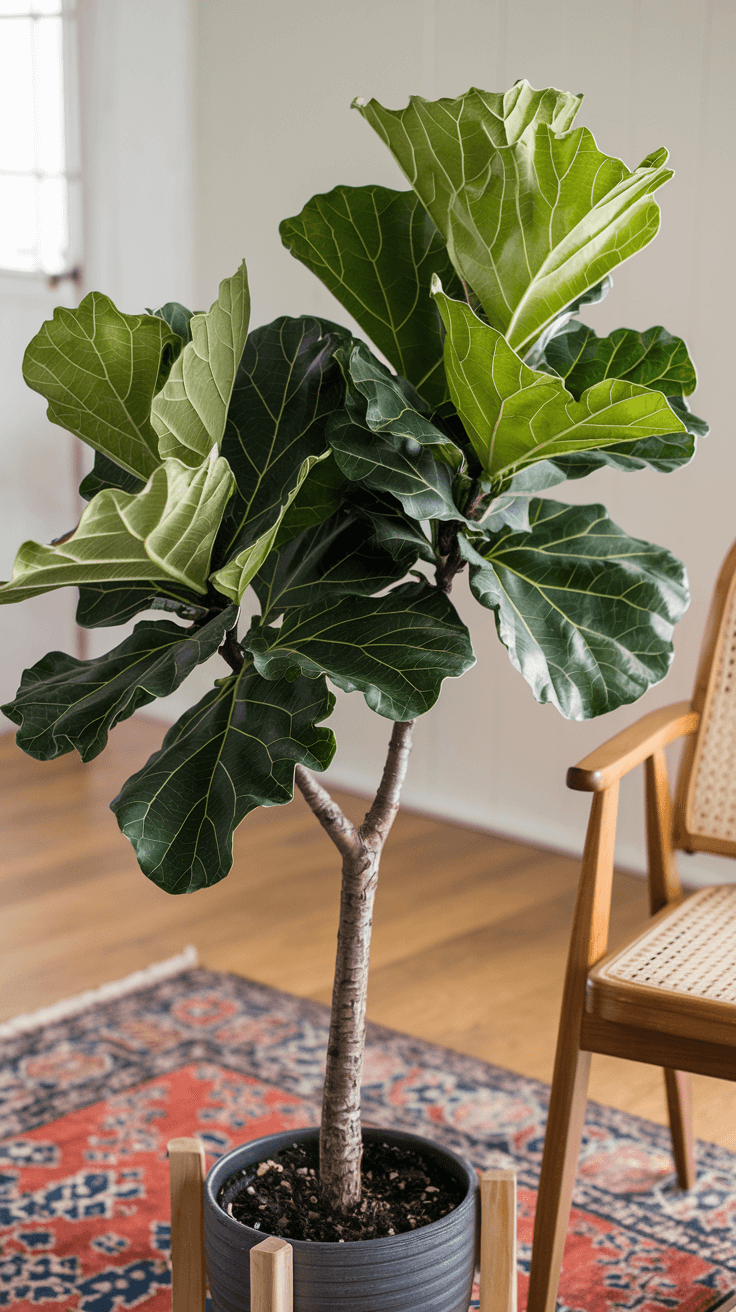
Strategic pruning stimulates branching and increases the number of growing points. When you cut the main stem or branch tips, dormant buds below the cut activate, creating multiple new growth points that each produce leaves.
A single-stem fiddle with one growing point produces one leaf at a time, while a pruned, multi-branched specimen might develop 4-6 leaves simultaneously from different branches.
Prune in early spring just before the active growing season begins for best results.
Root health directly determines growth capacity. Annually check whether your fiddle has become root-bound by examining roots visible at drainage holes or gently removing the plant to inspect the root ball. When roots circle densely around the pot’s edges, upsize to a container 2 inches larger in diameter.
The expanded root capacity typically triggers a growth surge within 4-6 weeks as the plant accesses fresh soil and space.
Action step: Create optimal conditions one month before peak growing season (late February/early March).
Improve lighting, stabilize temperature, increase humidity, and ensure the plant isn’t root-bound. This preparation positions your fiddle to maximize growth when spring arrives.
Troubleshooting New Leaf Problems
New leaves that remain stuck in their bud casing or fail to unfurl properly usually indicate insufficient humidity or physical obstruction. Increase ambient moisture around the plant and gently inspect the emerging leaf for any stuck points.
Very carefully, you can sometimes help by moistening the stuck area with a damp cloth and gently separating adhered surfaces, though this carries risk of damage. Prevention through adequate humidity works better than intervention.
Distorted, torn, or irregularly shaped new leaves often result from physical damage during the vulnerable unfurling stage or pest problems. Thrips, in particular, damage developing leaves before they emerge, causing distortion that becomes visible only as the leaf opens. Inspect carefully for pests, examining leaf undersides and growing points.
Isolated damage on a single leaf might be accidental contact, but patterns across multiple new leaves suggest pests or environmental issues.
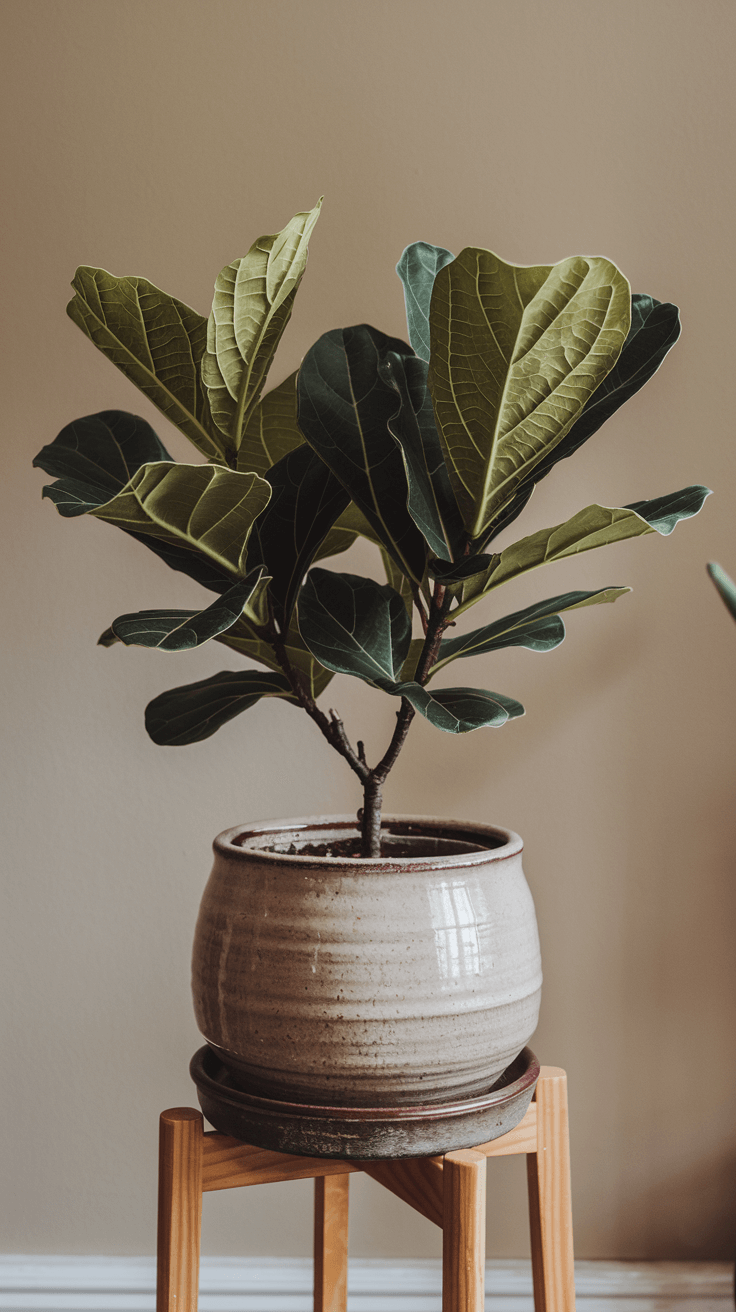
Brown edges or tips on new leaves immediately after unfurling typically indicate fertilizer burn, low humidity, or inconsistent watering. New tissue is particularly sensitive to salt accumulation from excessive fertilization.
If this occurs, flush the pot thoroughly with plain water, reduce fertilizer concentration, and increase humidity around the plant. Subsequent leaves should emerge cleaner if the underlying issue is corrected.
Very small new leaves compared to previous growth suggest declining plant health, inadequate light, nutrient deficiency, or root problems. This is a red flag requiring investigation—healthy fiddles maintain or increase leaf size as they mature.
Progressively smaller leaves indicate the plant is struggling to support growth and needs corrective care addressing the underlying cause rather than attempts to force growth.
Celebrating and Supporting New Growth
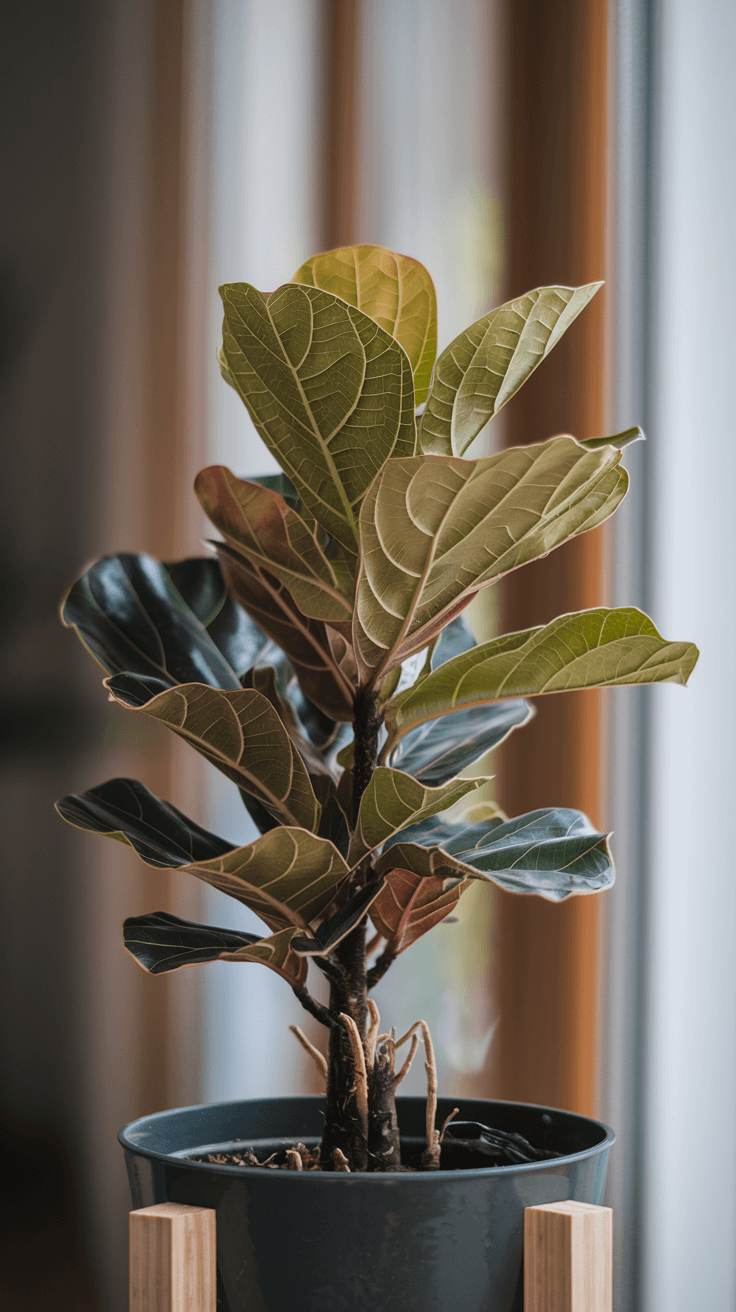
The appearance of new leaves on your fiddle leaf fig represents validation of your care efforts and proof that your plant is thriving. Each new leaf adds to the plant’s photosynthetic capacity, creating a positive feedback loop where more leaves support even more growth.
Watching the complete development cycle from tight bud to glossy mature leaf teaches you to read your plant’s rhythms and understand its specific needs.
The patience required—waiting 6-8 weeks for complete leaf development—mirrors the broader patience fiddle ownership demands, where results unfold on the plant’s timeline rather than yours.
Focus on maintaining consistent optimal conditions rather than trying to force accelerated growth. Fiddles respond to stability and appropriate care by producing leaves at their natural pace, which varies by season and individual plant characteristics.
When you stop worrying about whether new leaves will appear and instead focus on creating conditions that support growth, you’ll often find your fiddle responds with steady, reliable leaf production that continues year after year.
The relationship between your care inputs and the plant’s growth outputs becomes intuitive over time, transforming new leaf emergence from an anxious waiting game into expected, celebrated confirmation that your partnership with this living thing is working exactly as it should.

